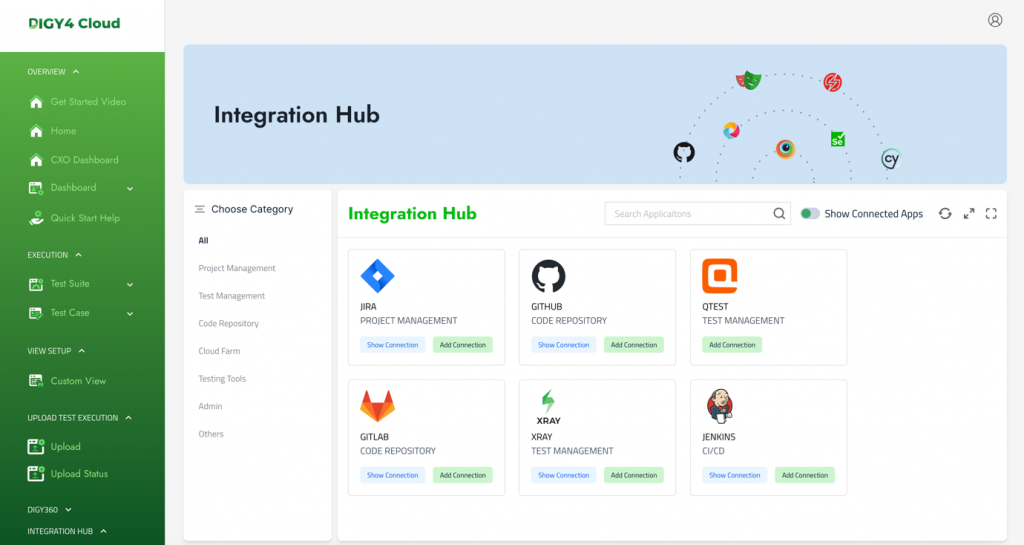Digy360 serves as a Pluggable Continuous Test Orchestration Pipeline, empowering organizations to execute automated tests with every code change in a continuous manner.
Automated tests are triggered based on the provided requirement ID during code commits. Digy360 utilizes this ID to selectively retrieve necessary BDD steps from Test Management platforms. It then executes corresponding glue code using Digy360-supported Automation Frameworks on compatible Test Execution platforms. Automation results are updated both in Test Management systems and DigyDashboard.
This ensures continuous, controlled, and observable test automation at any given time. Digy360 seamlessly connects various components, fostering true continuity in the Continuous Testing Pipeline:
These connections are established in a tool, framework, solution, platform, and vendor-agnostic manner, preventing Digy360 from being tied to specific components. Operating on an integration model rather than a migration model, Digy360 allows adoption without the need for migration.
What it is not?
Digy360 differs from traditional DevOps CI/CD platforms; it specifically focuses on being a pluggable Continuous Test Orchestration Pipeline dedicated to running tests continuously within any conventional CICD platform.
Why Digy360?
In the realm of Continuous Integration/Continuous Deployment (CICD) pipelines, the goal is to achieve a truly “continuous” integration and delivery process for every code change. However, this typically involves:
Notably, the testing component is often overlooked for various reasons:
The Integration Hub, an integral component of DigyCloud, enables organizations to seamlessly integrate all supported elements of CI/CD with Digy360. This facilitates communication between Digy360 and the integrated components, thereby creating a cohesive Testing Pipeline. This orchestration ensures a continuous and streamlined Testing Pipeline.
Digy360 addresses these challenges by making automation execution a genuinely continuous process within any traditional pipeline, all without requiring the migration of existing infrastructure.
